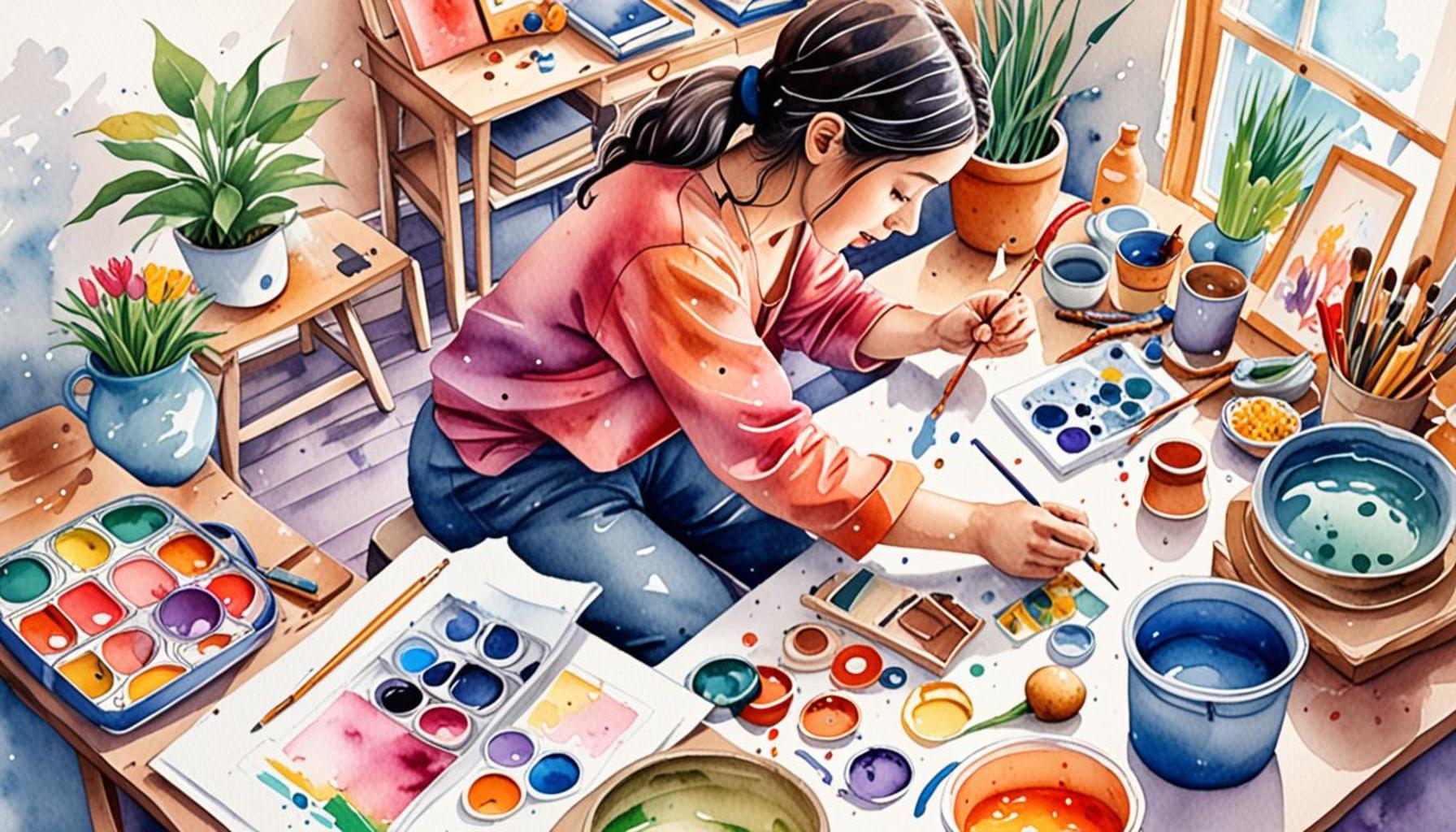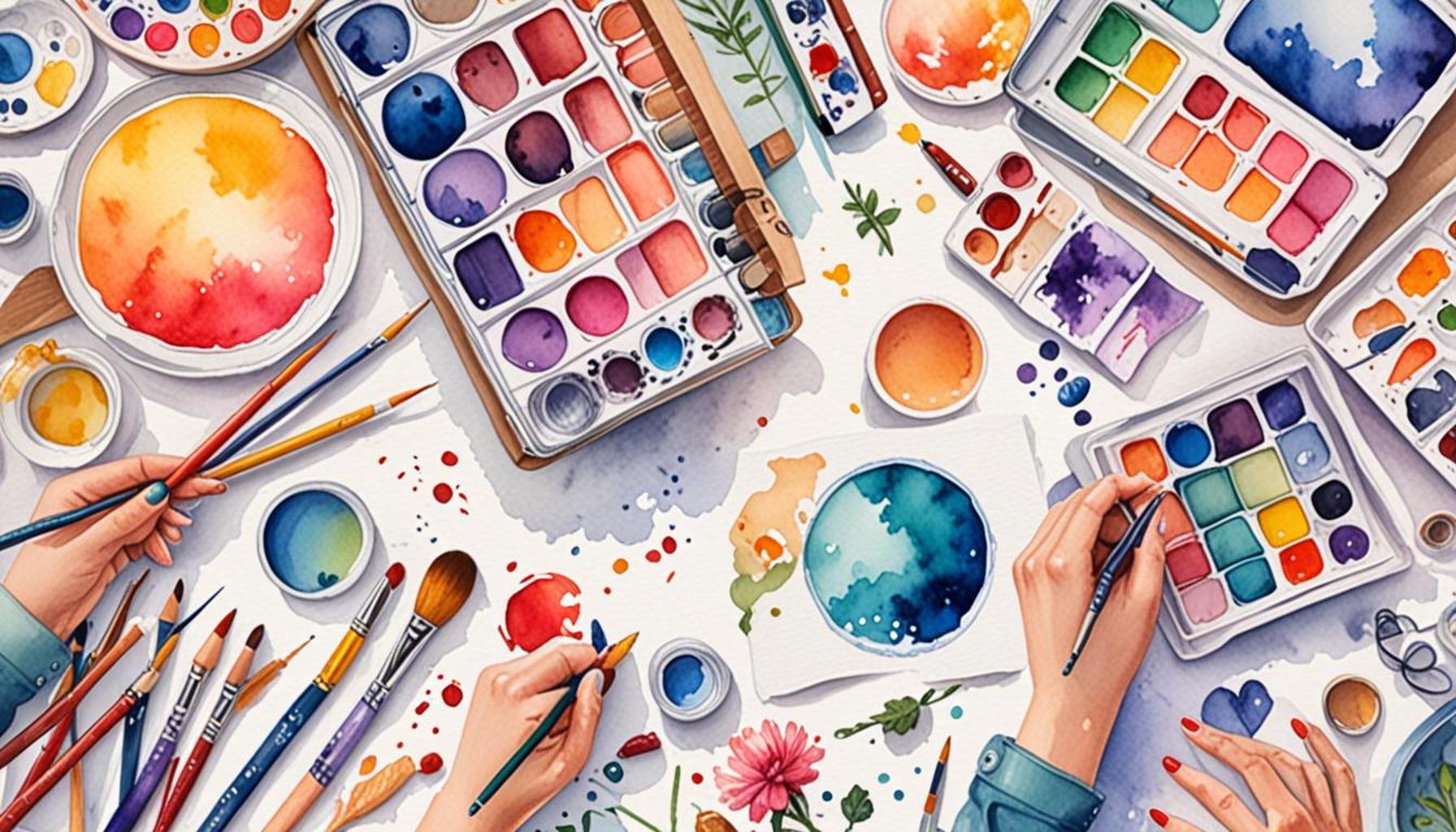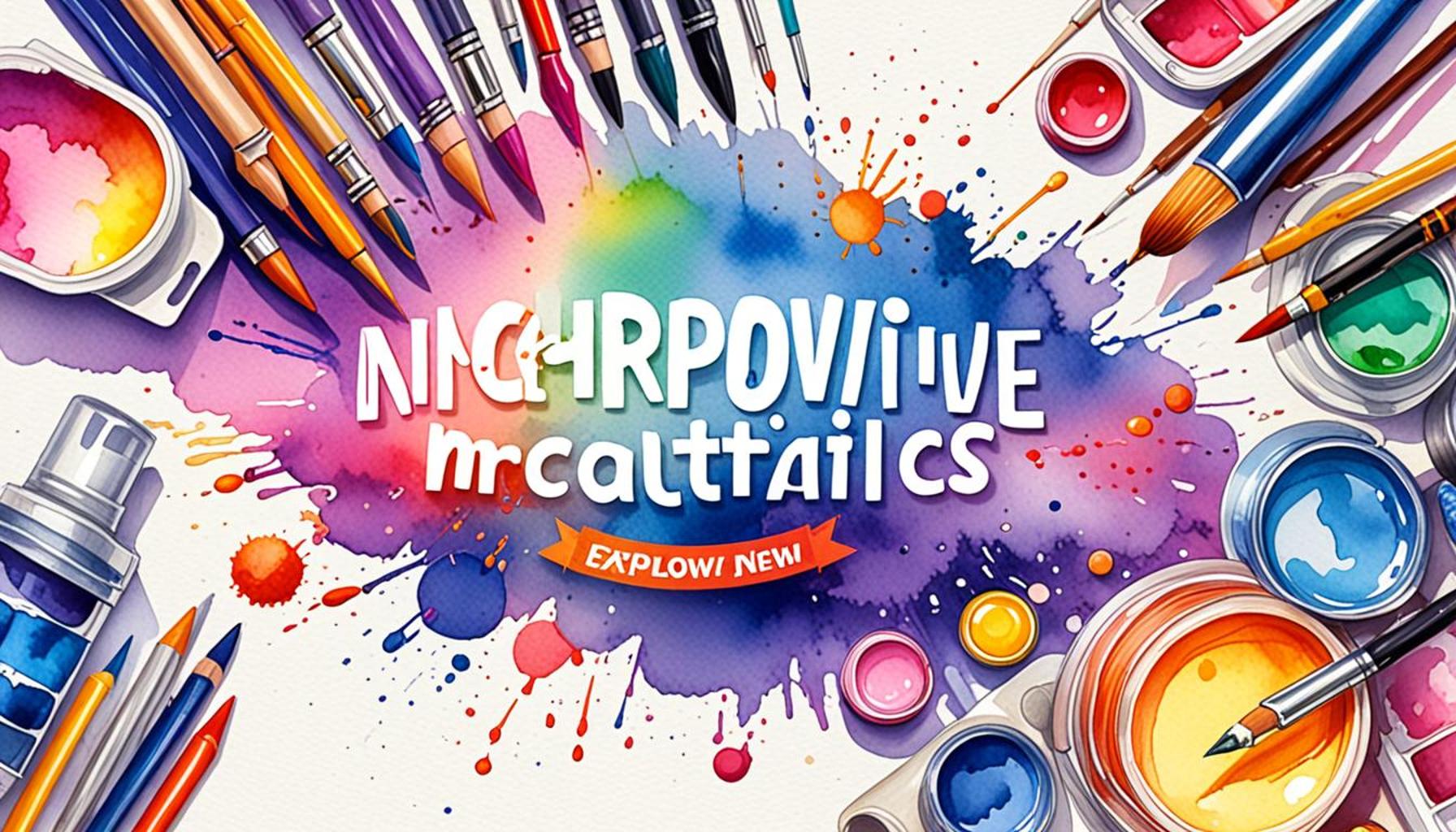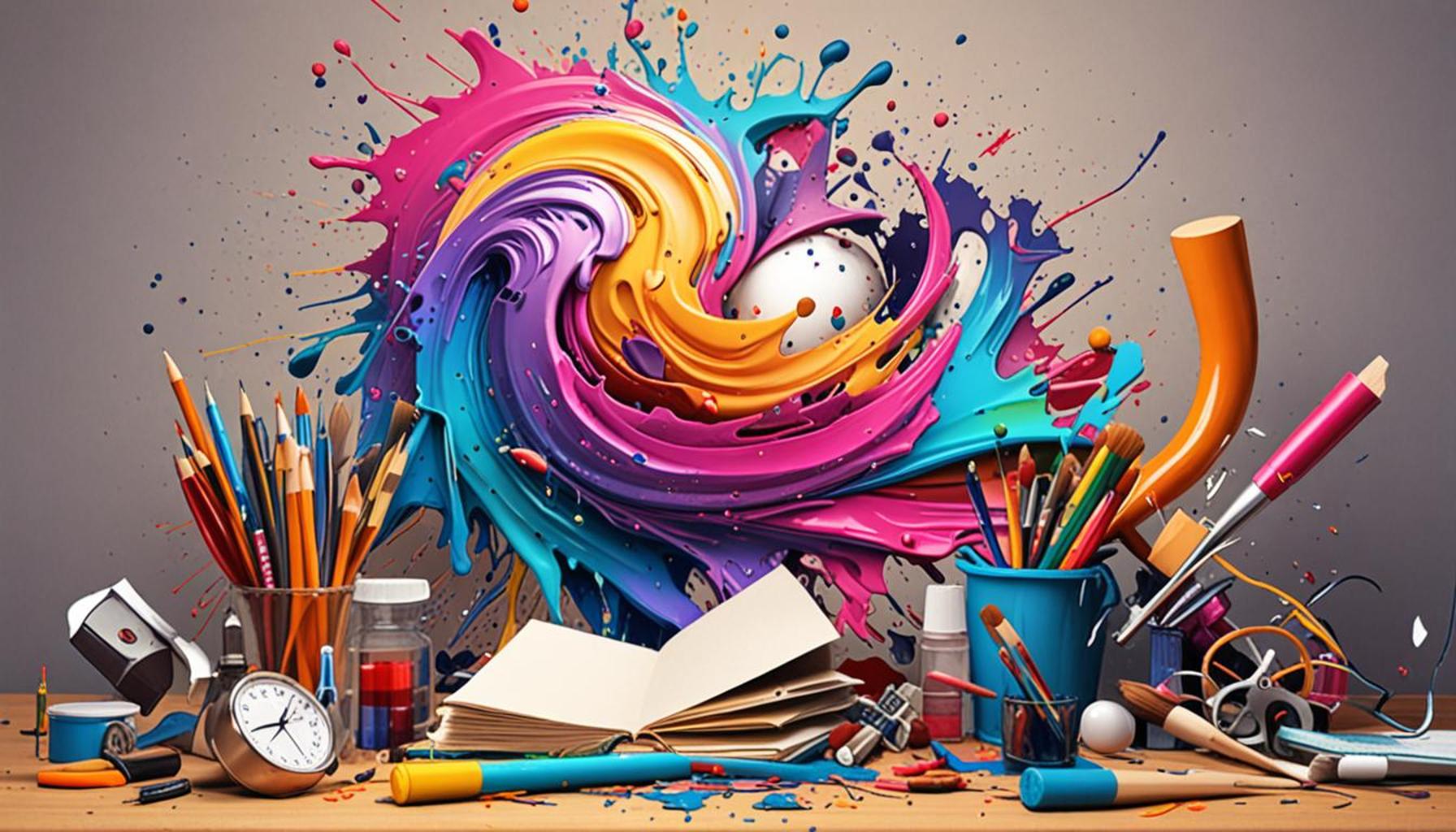The Connection between Creative Arts and Cultural Traditions: Preserving Legacies Through Hobbies

The Role of Creative Arts in Cultural Heritage
Creative arts serve as a vibrant thread woven into the fabric of our cultural traditions. They not only reflect our history but also play a crucial role in preserving legacies through hobbies. Engaging in artistic practices allows individuals to connect with their heritage in meaningful ways, fostering a sense of belonging and identity that is crucial in a multicultural society.
Across the United States, various hobbies illustrate this connection and showcase the diversity of artistic expression:
- Quilting: A timeless craft that tells stories through patterns. Each quilt can signify personal histories or represent community narratives, with certain designs rooted in specific traditions. For instance, the Amish are renowned for their distinctive quilting styles, which often feature intricate patterns and a deep commitment to craftsmanship. Quilting bees, where community members gather to create quilts together, exemplify how this art encourages collaboration and storytelling.
- Pottery: An ancient skill linking us to indigenous cultures. Pottery not only serves functional purposes but also acts as a canvas for cultural expression. Native American tribes, such as the Pueblo and Hopi, craft pottery that reflects their beliefs and local natural resources. Each piece not only showcases skill and artistry but encapsulates the historical narratives and spiritual connections of the tribe.
- Music: Genres like bluegrass and jazz embody regional histories and community bonds. Bluegrass, rooted in the Appalachian region, incorporates elements of folk and country music, often reflecting themes of rural life and emotional storytelling. In contrast, jazz emerged from African American communities in New Orleans, expressing the complexities of cultural identity and resilience. Both genres highlight the importance of music as a form of historical documentation, offering insight into the social issues and triumphs of their communities.
These hobbies not only keep artistic expressions alive but also encourage the transmission of knowledge across generations. When individuals partake in such creative practices, they contribute to a shared cultural narrative that shapes both their personal lives and those of their communities.
Furthermore, understanding the relationship between creative arts and cultural traditions reveals how art serves as a vehicle for intercultural dialogue. For example, community art projects often bring together individuals from different backgrounds, fostering collaboration and mutual respect. This dynamic interplay invites various voices to be heard, enriching the cultural tapestry that defines a community.
This exploration highlights how passions for art and tradition nurture identity and community, underscoring the importance of maintaining these connections in a rapidly changing world. By participating in creative arts, individuals not only celebrate their own heritage but also honor the diverse legacies that shape our collective existence.
DISCOVER MORE: Click here to learn how to enhance your collection
The Significance of Artistic Expression in Tradition
Artistic expression is a vital means of preserving cultural traditions, enabling individuals to not only express themselves but also to maintain a thread of continuity linking generations. Many hobbies grounded in creative arts serve as conduits for sharing stories, values, and crucial life skills, reinforcing the connection between the past and the present. Engaging in these practices not only enriches personal lives but also cultivates communal bonds, representing a tapestry of intricate cultural narratives.
One compelling example is dancing. Traditional dances, such as Irish step dancing or African tribal dances, exhibit cultural rhythms and stories significant to various communities. Group performances, often accompanied by music that resonates with memories of ancestors, reveal the pride communities hold in their heritage. Dance classes and festivals provide an opportunity for younger generations to learn these traditional movements, ensuring that cultural legacies are not lost but rather revitalized through fresh interpretations.
Another illustrative art form is storytelling. Whether through written literature, oral traditions, or even digital media, storytelling meets a fundamental human need to convey experiences and morals. Indigenous storytelling often involves elements of nature and spirituality, acting as a bridge to cultural understanding. For example, Native American storytelling frequently encompasses animal characters that impart ethical lessons, reflecting the intertwined relationship between nature and humanity. Community storytelling events, like open-mic nights or neighborhood storytelling circles, encourage both seasoned and budding storytellers to share their narratives and foster an appreciation for diverse experiences.
- Culinary arts: The kitchen stands as a sacred space for many, where family recipes are passed down through generations. Regional cuisines, from Southern barbecue to New England clam chowder, reveal a wealth of cultural history, showcasing the migration patterns, traditions, and influences that shaped them. Culinary workshops provide an engaging approach to teach participants about their heritage while enjoying the flavors that define their identity.
- Textile arts: Crafting garments and textiles not only serves practical purposes but also conveys cultural significance. Weaving traditions from Guatemala or the intricate kente cloth of Ghana demonstrate how fabrics can tell stories about history, identity, and geographic origins. Workshops centered around these arts highlight the skills involved and encourage appreciation for patterns and techniques unique to each culture.
- Visual arts: Painting, sculpting, and drawing can also serve as powerful mediums for cultural expression. Folk art movements showcase community-driven works that communicate local stories and values. Public art projects, such as murals celebrating cultural diversity, contribute to community pride and dialogue, while simultaneously beautifying spaces.
Ultimately, the practice of engaging in creative hobbies creates a vital foundation for the preservation of cultural traditions. By participating in these artistic endeavors, individuals breathe new life into their heritage while fostering connections with others, paving the way for a richer understanding of our diverse human experience.
Understanding the Interplay Between Creative Arts and Cultural Preservation
The relationship between creative arts and cultural traditions is profound, weaving a tapestry of shared heritage that benefits communities around the globe. Engaging in creative hobbies—be it painting, pottery, music, or dance—allows individuals to connect deeply with their cultural roots, fostering a sense of identity and belonging. A significant part of this connection lies in the transference of knowledge, where traditional techniques are passed down through generations, ensuring that these invaluable skills remain alive in the community.Furthermore, these artistic expressions often serve as a reflection of a society’s values and lived experiences. For instance, traditional folk music often encapsulates historical narratives, while craft techniques like weaving or embroidery can tell stories of migration, hardship, and resilience. Preserving these artistic mediums not only acknowledges the past but also stimulates dialogue, prompting questions that intrigue the younger generation. With globalization continuously influencing cultural dynamics, hobbies that encapsulate traditional skills face the risk of fading away. However, by integrating these practices into daily life or community workshops, we can promote awareness and understanding across diverse demographics. Through platforms such as social media, artisans can share their methods and backgrounds, reaching a wider audience eager to appreciate and learn. The need to maintain this connection encourages individuals to pursue hobbies that foster local traditions, ensuring that legacies not only survive but thrive.
Exploring the Impact of Hobbies on Community and Identity
Participating in these creative arts serves not only personal pleasure but also strengthens community bonds. Gatherings centered around crafting and creating become hubs for cultural exchange, where individuals from various backgrounds share techniques and stories. This aspect can be vital in multicultural societies, promoting unity through diversity, as shared creative experiences build empathy and understanding.Moreover, these hobbies often instill a sense of pride within communities. When individuals engage in traditional arts or crafts, whether through festivals, exhibitions, or community classes, it enhances local recognition and appreciation. This cultural awareness fosters a commitment not only to individual legacies but collectively to cultural continuity. As individuals take ownership of their heritage, they contribute to a rich repository of human experiences that not only enrich their lives but those of future generations. By valuing and practicing these traditions, we ensure that the narratives shaped by our ancestors endure, continuing to inform and inspire.
Table: Advantages of Creative Arts in Cultural Preservation
| Category | Key Benefits |
|---|---|
| Cultural Awareness | Promotes understanding of diverse heritage through shared art forms. |
| Community Engagement | Strengthens local connections all while preserving cultural practices. |
In conclusion, the pursuit of creative arts serves as a bridge between generations, ensuring that cultural traditions are not lost but instead celebrated. The act of engaging with these hobbies becomes a powerful tool in the safeguarding of identity and heritage, creating a more interconnected community committed to preserving its legacy.
DISCOVER MORE: Click here to explore the world of drone photography
Transformative Power of Creative Hobbies in Cultural Preservation
Creative hobbies not only provide a means of artistic expression but also act as essential tools for cultural preservation. The act of engaging in arts and crafts allows individuals to reclaim, revitalize, and sustain cultural identities that have been shaped over time. Such creative pursuits can instill a sense of pride and belonging while also fostering a connection between past and present. The transformation brought about through these hobbies often transcends mere aesthetic value; it embodies the heart of cultural narratives.
Take, for instance, the art of pottery. Many indigenous cultures have practiced pottery for centuries as a means of sustenance and artistic expression. Clay is molded into functional ware, each piece often reflecting the stories and traditions of the community. Workshops focusing on traditional pottery techniques invite enthusiasts to explore ancient methods like coiling or hand-building, allowing participants to interpret cultural histories through their creations. Such hands-on experiences reinforce the importance of craftsmanship and storytelling in cultural practices and keep these age-old traditions alive.
- Photography: In the modern age, photography has emerged as a contemporary way to narrate cultural stories. Visual documentation through lenses allows individuals to capture and share their unique experiences, contributing to a broader cultural narrative. Photographers dedicated to documenting their heritage highlight regional festivals, traditional attire, and everyday life, showcasing the richness of their communities. Community exhibitions and online platforms have further democratized access to these narratives, fostering interest and dialogue around diverse cultural traditions.
- Music: Much like dance, music acts as a profound safeguard of cultural identity. Traditional musical forms, whether they are Appalachian folk tunes or Pacific Islander rhythmic chants, encapsulate emotions, histories, and shared experiences. Music workshops and jam sessions not only preserve these genres but also introduce them to new audiences looking to connect with their roots or explore new cultures. Such gatherings invigorate the cultural fabric, providing a stage for collaboration and innovation, allowing traditional and modern influences to meld harmoniously.
- Literary Arts: Poetry, novels, and essays rooted in cultural lore reflect a society’s values and concerns across generations. Writers contribute to the preservation of language and dialects by incorporating them into their works, making them accessible to contemporary audiences. Literary festivals often celebrate authors who draw inspiration from their cultural heritage, encouraging discussions on identity and belonging. By showcasing diverse voices, these events not only honor tradition but also open up conversations surrounding cultural evolution and adaptation in the modern world.
This evolving landscape of creative arts serves as a powerful reminder that cultural preservation is not a stagnant practice; rather, it is a dynamic interplay between heritage and innovation. By encouraging participation in diverse artistic pursuits, individuals can weave a vibrant narrative of their cultural identity, ensuring that their legacies endure and flourish. The creative arts become a shared space for diverse voices to resonate, fostering a greater understanding and appreciation of the rich tapestry of human culture.
DIVE DEEPER: Click here to discover innovative techniques
Conclusion: Fostering Cultural Resilience Through Creative Expression
The intricate relationship between creative arts and cultural traditions serves as a vital framework for preserving legacies that might otherwise fade into obscurity. As we explore various crafts such as pottery, photography, music, and the literary arts, it becomes clear that these activities are not merely hobbies; they are essential practices that honor and celebrate the rich tapestry of human experience.
In a world where globalization often threatens individual cultural identities, engaging in creative pursuits provides an avenue for communities to reclaim their narratives and pass them down through generations. Each artistic expression encapsulates not only the creativity of its maker but also the collective wisdom and history of a culture. Workshops, festivals, and community gatherings cultivate collaboration and learning, creating a fertile ground for innovation while rooted in tradition.
As individuals partake in these meaningful activities, they contribute to a broader dialogue about culture, identity, and belonging, leading to a more inclusive understanding of our shared human heritage. By supporting and participating in the arts, we empower ourselves and others to keep the flames of tradition alive, ensuring they glow brightly for future generations. The connection between creative arts and cultural preservation is not just about maintaining the past; it is also about inviting the future to shape a vibrant narrative that celebrates who we are and where we come from. Therefore, let us embrace our creative hobbies as powerful tools for cultural resilience, enabling us to weave enduring legacies that will inspire and connect across time and borders.


